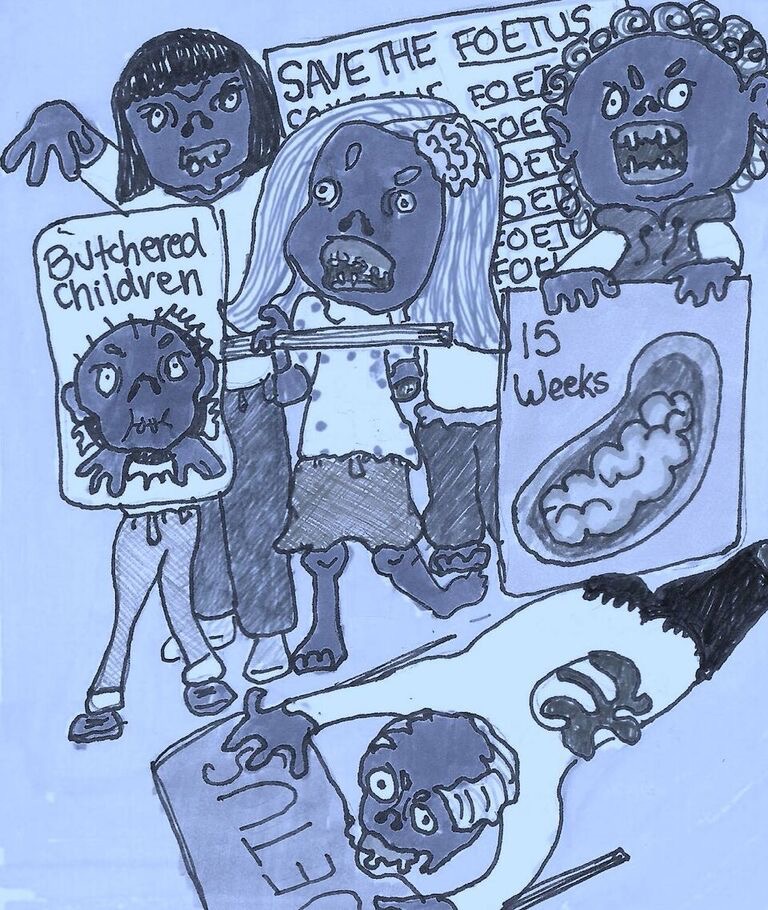Why is this still a thing?
The Street Preachers Edition
We’ve all been there: running to get to class because you hit the snooze button on your alarm one too many times. You approach the corner of St. George and Harbord, stomach grumbling because you’ve yet to eat a morsel of food. Then BAM, out of nowhere, a gigantic photo of a dead fetus is forcefully pushed into your face.
You want to gag, partially due to the shrill screeches of the anti-abortion protesters, and partially due to the first world torment you are being exposed to. Besides, disembodied gummy bear fetuses are a little too graphic for your morning walk through campus.
But who are the soldiers fighting for this cause? Rotating through shifts during the colder months of the year and standing together during the summer months, a group of no more than four or five men and women always form as a united front. And yet this seemingly small group represents an army of young people attempting to defend the rights of unborn fetuses. A brief history of abortion may put the deprived and disregarded rights that females have had over their bodies into perspective. In the late 19th century, both abortion and birth control were made illegal under the pretext of being a threat to life, under section 251. When things are made illegal people typically find ways to carry out activities regardless. This holds true today, as well as back in the 1900s. In 1967, it was estimated that 35,000-120,000 illegal abortions were taking place every year. Birth control became legal a few years later, as did some abortions if there were health risks involved for the mother.
A man by the name of Dr. Henry Morgentaler became a prominent activist in the legality of abortion in the 20th century. He continuously pushed to repeal the abortion law and promote freedom of choice. He performed illegal abortions in his clinic in Quebec, and was charged multiple times.In one instance, a jury of eleven men and one woman acquitted Morgentaler of his charges. The jury’s decision was overturned multiple times by the Quebec Court of Appeal. This should have instigated a national state of emergency. Women all across the country were dying from desperation and botched abortions. The public opinion of both men and women (as seen in the jury verdict) demonstrated the importance of freedom of choice. Finally, on January 28th1988, nearly a century after the major abortion debate began, the Supreme Court of Canada beat down Canada’s Abortion Law. Their claim that it was unconstitutional and a violation of Section 7 which infringed on a women’s right to “life, liberty, and security”. Finally, the political aspect of abortion had become legalized. So what are these pro-life picketers still arguing about?
Strangely, these picketing groups aren’t comprised of homely 40-year old virgins. They aren’t your typical devout churchgoers either. Pro-life picketing groups are normally comprised of young men and women who brainlessly chant responses and slogans that seem outdated and thoughtless. The environment feels more like a compilation of hypnotic somnambulists than a space to have an educated debate with others about the benefits of a pro-life lifestyle. So, this brings us to the question: why is this still a thing?
Featured image courtesy of Lesia Szyca
